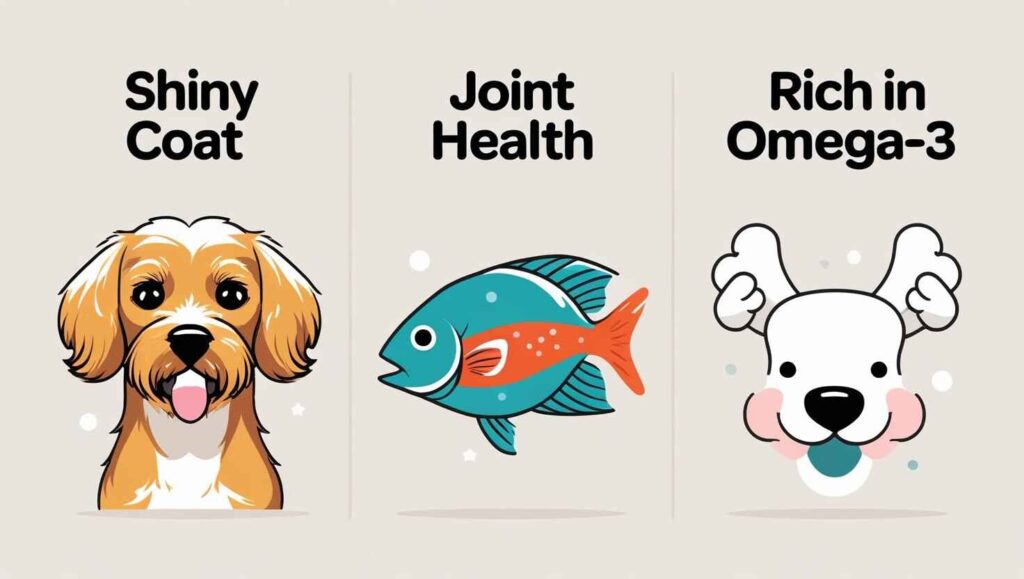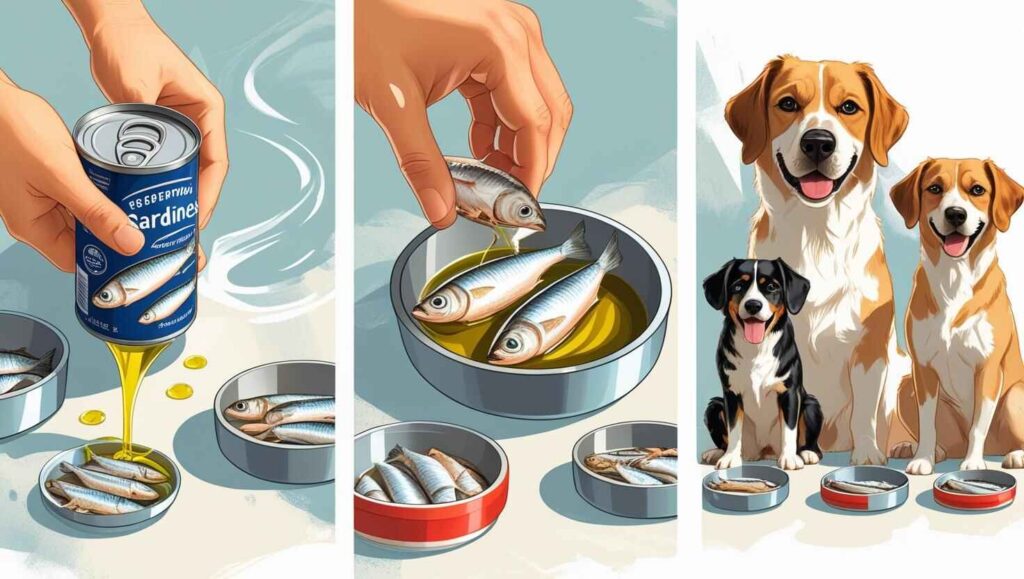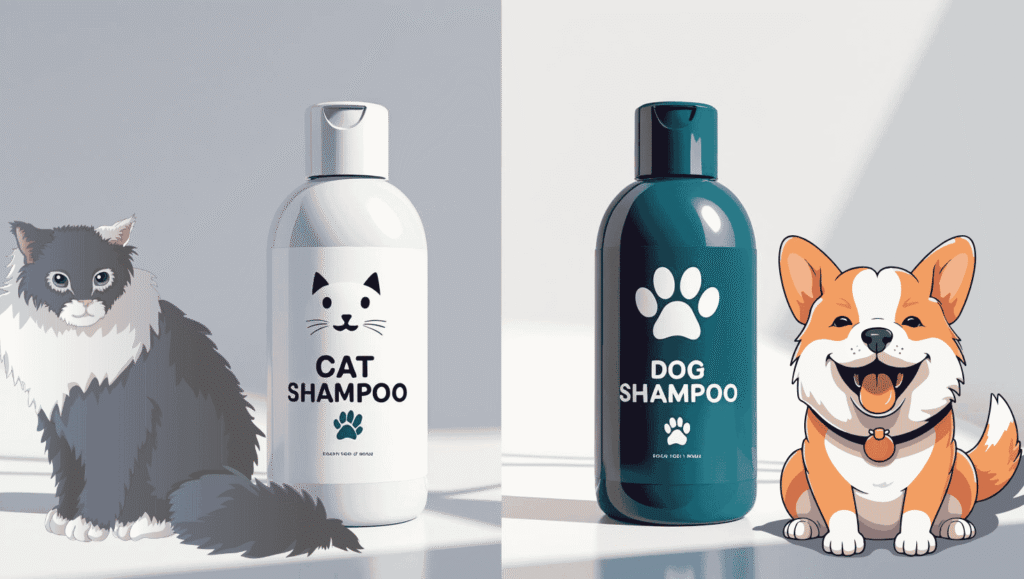🐟 Can Dogs Eat Sardines in Olive Oil?
Yes, dogs can enjoy sardines packed in olive oil, but it’s important to serve them in moderation. These small fish pack a nutritional punch, offering omega-3 fatty acids, protein, calcium, and other essential nutrients. However, olive oil can add unnecessary fat, which may cause problems if overused.
Let’s dive into the benefits, risks, and best ways to include sardines in olive oil in your dog’s diet.
🐠 What Are Sardines?
Sardines are small, oily fish that are often canned for human consumption. They’re part of the herring family and are rich in healthy fats and nutrients. Sardines are commonly packed in water, brine, tomato sauce, or olive oil.
Their small size and soft bones make them easy for dogs to chew and digest.
✅ Are Sardines in Olive Oil Safe for Dogs?
Yes—but moderation is key. Sardines offer high-quality nutrients, while olive oil can help with coat health and digestion in small amounts. The problem arises when the quantity of oil is too high or if your dog has specific health issues.
Let’s explore the pros and cons.
✅ Pros of Feeding Sardines to Dogs
- Rich in Omega-3 Fatty Acids
Helps reduce inflammation, supports heart health, and boosts coat shine. - High-Quality Protein
Supports muscle development and energy levels. - Joint Support
Omega-3s aid in managing arthritis and improving mobility. - Dental Health
Chewing sardines can help remove tartar and promote oral hygiene. - Bone and Joint Strength
Soft edible bones offer calcium and phosphorus.

⚠️ Cons and Risks of Sardines in Olive Oil
- High Fat Content
Olive oil adds calories that can lead to weight gain or pancreatitis in some dogs. - Salt or Preservatives
Some canned sardines may contain added salt—avoid these at all costs. - Allergic Reactions
Though rare, dogs can be allergic to fish. - Digestive Upset
Sudden introduction of sardines or too much oil can lead to diarrhea.
🥩 Nutritional Value of Sardines for Dogs
Here’s a look at the nutrients per 100g of sardines (in olive oil):
| Nutrient | Amount | Benefit |
|---|---|---|
| Calories | 200-220 | Energy source |
| Protein | 24g | Muscle development |
| Omega-3 fatty acids | 1,400mg | Heart, skin, coat health |
| Calcium | 382mg | Strong bones and teeth |
| Vitamin D | 270 IU | Bone health and immune function |
| B12 | 8.9 mcg | Nerve and blood health |
This makes sardines a nutrient-dense snack that’s ideal when served correctly.
🫒 Olive Oil: Healthy or Harmful for Dogs?
Olive oil can be beneficial—but only in small, controlled quantities.
👍 When Olive Oil Is Beneficial
- Improves coat shine
- Supports healthy skin
- Aids digestion in constipated dogs
- Boosts immunity
Use extra virgin olive oil with no added ingredients.
👎 When Olive Oil Can Be Risky
- Feeding too much fat can upset your dog’s stomach, leading to vomiting, diarrhea, or even pancreatitis.
- Dogs with obesity or pancreatitis should avoid added oils.
- Low-quality olive oils may be mixed with harmful additives.

🍽️ How to Serve Sardines in Olive Oil to Dogs
Proper preparation is key to safe feeding.
📏 Portion Size Guidelines by Dog Size
| Dog Size | Sardines per Serving | Frequency |
|---|---|---|
| Small (5-20 lbs) | ½ to 1 sardine | Once or twice/week |
| Medium (21-50 lbs) | 1–2 sardines | 2 times/week |
| Large (51+ lbs) | 2–3 sardines | 2–3 times/week |
Always drain the oil to reduce fat content before serving.
🕑 How Often Can Dogs Eat Sardines?
Feed sardines 1–3 times per week depending on your dog’s weight, age, and health condition. Avoid daily feeding unless prescribed by a vet.
🐾 Alternatives to Sardines in Olive Oil
- Sardines in Water – Ideal for low-fat diets.
- Canned Salmon – Also rich in Omega-3s, but higher in mercury.
- Anchovies (unsalted) – Tiny fish, big benefits.
- Cooked Plain Fish (e.g., cod, tilapia) – Safe and easy to digest.
🚫 Common Mistakes to Avoid
- Feeding sardines with added salt or seasoning
- Not draining excess olive oil
- Feeding too frequently
- Ignoring your dog’s allergies or sensitivities
- Using sardines packed in tomato or mustard sauce
(External Resource: American Kennel Club – Human Foods Dogs Can Eat)
❓ Frequently Asked Questions (FAQs)
1. Can puppies eat sardines in olive oil?
Yes, but only in very small portions. Before adding any new food to your puppy’s meals, it’s best to check with your vet first.
2. What if my dog accidentally ate too many sardines?
Watch for symptoms like vomiting, diarrhea, or bloating. If the symptoms don’t improve or seem to get worse, reach out to your vet right away.
3. Are sardines in sunflower oil okay for dogs?
It’s better to avoid them. Sunflower oil is high in omega-6 fatty acids, which can cause inflammation if not balanced with omega-3s.
4. Can dogs eat sardine bones?
Yes, canned sardine bones are soft and fully edible. They’re a great source of calcium and phosphorus.
5. Do sardines cause fishy breath in dogs?
Temporarily, yes.However, giving your dog a good tooth brushing or offering a dental chew can help freshen their breath and reduce that fishy odor.
6. Are there any sardine brands recommended for dogs?
Look for unsalted, BPA-free, sardines in water or olive oil with no added ingredients. Trusted options include brands such as Wild Planet and King Oscar, which are known for their quality and dog-safe ingredients.
🐕 Conclusion: Should You Feed Sardines in Olive Oil to Your Dog?
Sardines in olive oil can be a tasty and nutritious treat for your dog—if given in moderation. Their rich omega-3 content, protein, and essential minerals make them beneficial, but the olive oil must be limited to avoid digestive issues or weight gain.
Pour off the excess oil, stick to appropriate portion sizes, and steer clear of any added salt or seasonings—these small steps can go a long way in keeping your dog both healthy and content.
If you’re ever unsure, it’s always a good idea to check with your vet before making big changes to your dog’s meals.



